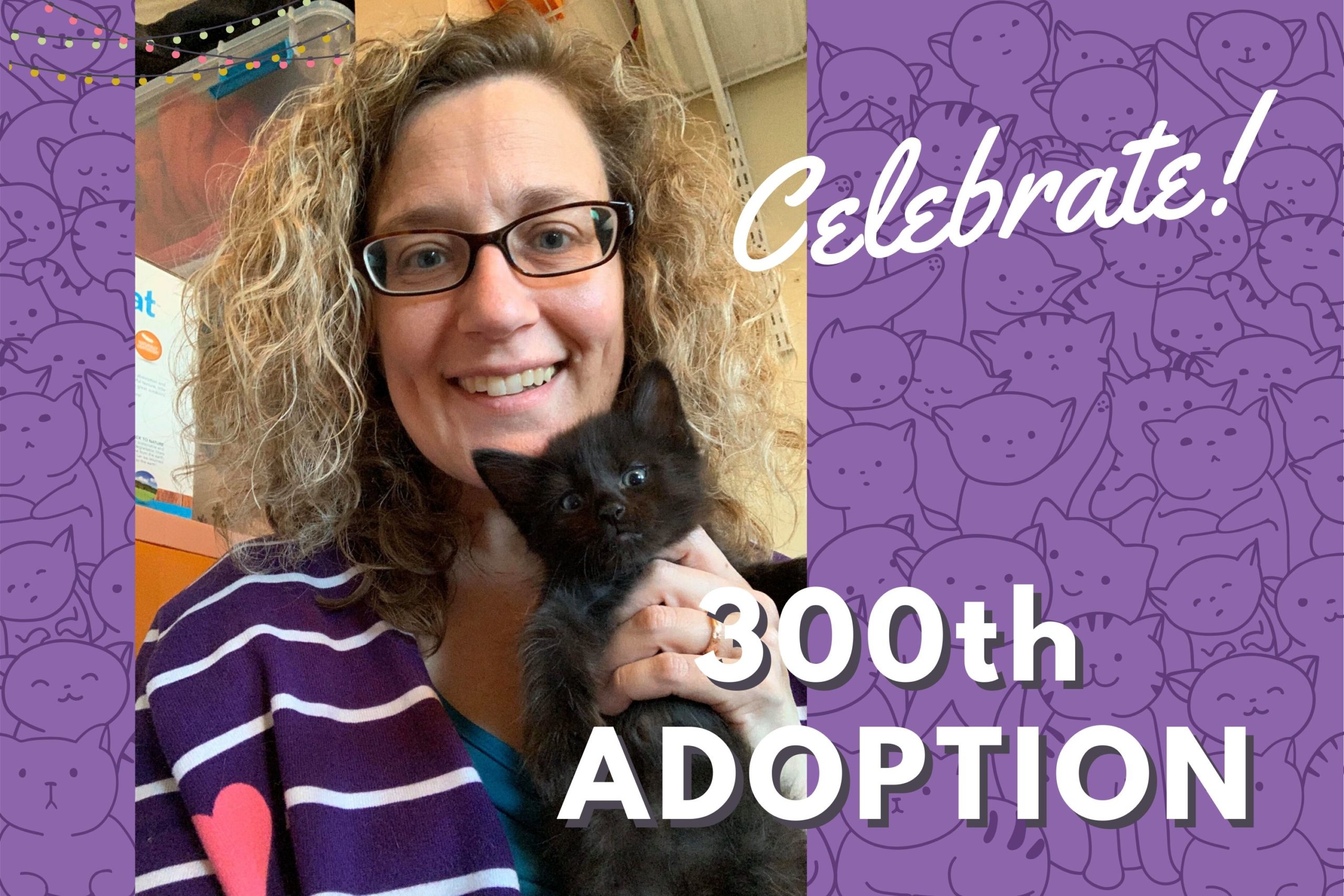
8 Years, 300 Adoptions – Cat and Kitten Fostering with Volunteer Susan O.
For those who love cats but aren’t able to outright adopt them, becoming a cat foster parent is a great way to help. Fostering cats from a shelter is an important step in socializing them and giving them a better life than they would have at a shelter while waiting to be adopted. Fostering also allows more room at shelters to accept incoming animals from rescue organizations like A.R.F.-Animal Rescue Foundation. Operating in the western suburbs of Chicago, A.R.F. is a foster-based humane society that saves approximately 750 animals per year through our network of foster volunteers.
Susan O. has been an A.R.F. foster volunteer for eight years, shaping our foster programs and helping over 300 cats get adopted as of May 3, 2020. Soon after she started fostering, she found her niche with pregnant cats, cat moms with babies, and orphaned neonatal kittens, who require a lot of special care. “It’s always challenging and sometimes incredibly hard, but I can’t imagine stopping,” says Susan. She is a wealth of knowledge when it comes to fostering, and has brought together a community of foster parents and animal lovers through her Kittenville Facebook page, documenting the “scampy adventures” of cats and kittens that are getting ready for adoption.
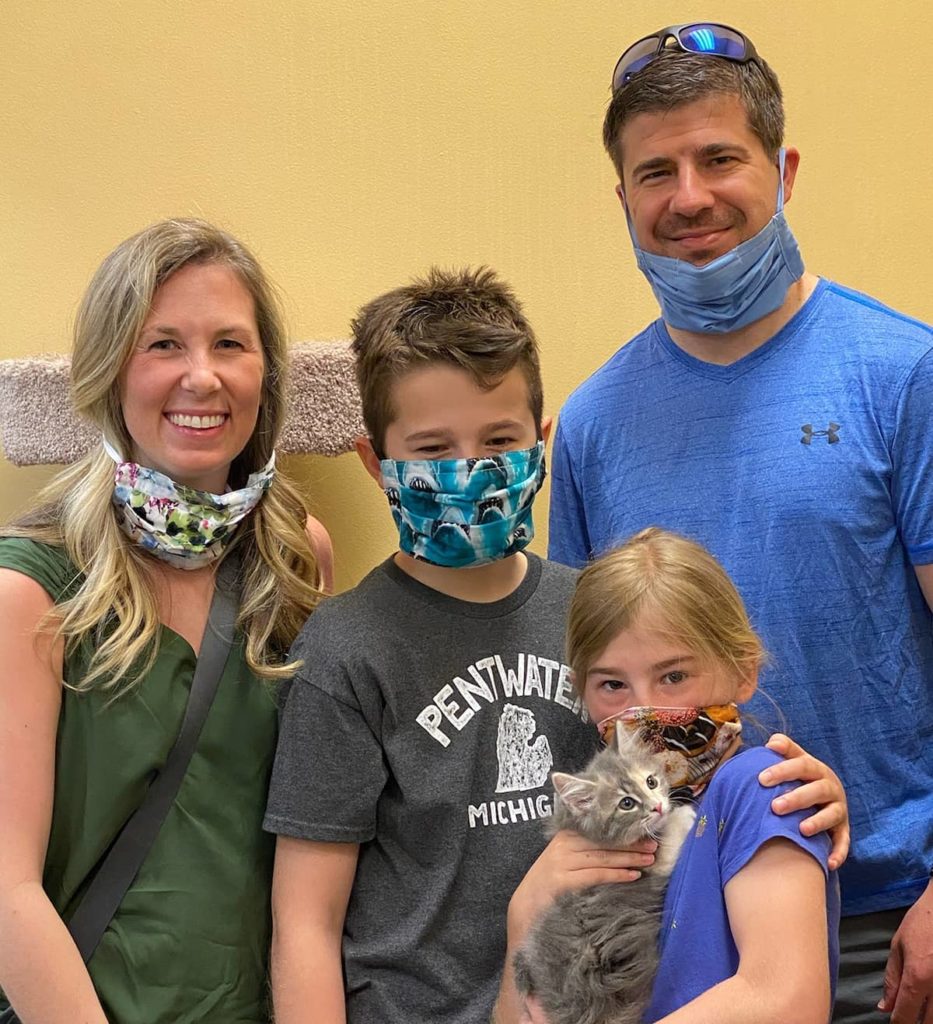
Adoption #300 – Winter
We interviewed Susan about her experiences as a cat foster parent, hoping to share her knowledge with the community and to spread the message about the importance of fostering animals.
How do you feel about reaching the big three-oh-oh?
Honestly it’s hard to say. It’s crazy to think of. It’s certainly not something I ever thought about when I started fostering. I mean who starts fostering thinking “I wonder how many cats I can save?” I guess the short answer is I feel happy for those 300 who found forever homes, but it’s impossible to think of those 300 without thinking of those that didn’t make that milestone…The ones who barely had a chance, the ones who got sick and couldn’t fight hard enough, the ones who were so close to being adopted. 300 adoptions is amazing. It is certainly something to celebrate, and I’m thrilled for those 300. And on we go to the next 300.
Tell us about your own feline family members. How many “foster fails” do you have?
We currently have many cats of our own and only one foster “fail.” Maui was a kitten from the very first litter we ever fostered. We got him at 8 weeks old and he hadn’t been adopted by the time he was 5 months old so we figured that was a sign that he was ours.
What motivated you to start fostering?
We love kittens. But at one point we had 10 cats of our own and we could NOT adopt any more. I found The Critter Room on Facebook where a foster was livestreaming his foster [pets] and watched what he was doing and felt that was something we could do!
Why do you choose to foster neonatal kittens, who need a lot of hands-on care, instead of more self-sufficient adult cats?
Neonatal kittens are one of the most at-risk populations in animal shelters. People think–oh kittens, everyone loves kittens. But kittens under 8 weeks old are not adoptable, and most shelters are not equipped to take on the challenges that come with helping this fragile population. When we started fostering I said I’d take kittens because I didn’t think my resident cats would be all that thrilled with adult cats….I didn’t think of it as the population that needed my help the most, but that’s just what they are.
Eventually we found our niche taking in pregnant cats and moms with babies. We have also taken on neonatal kittens without a mom and bottle fed and raised them. With my resident cats, this population of fosters works for us. Adult cats on their own typically don’t appreciate being confined to one room, which is where they would be in my house…. However, it doesn’t mean they are less in need. If you want to foster, A.R.F. can hook you up with whatever works for your home environment.
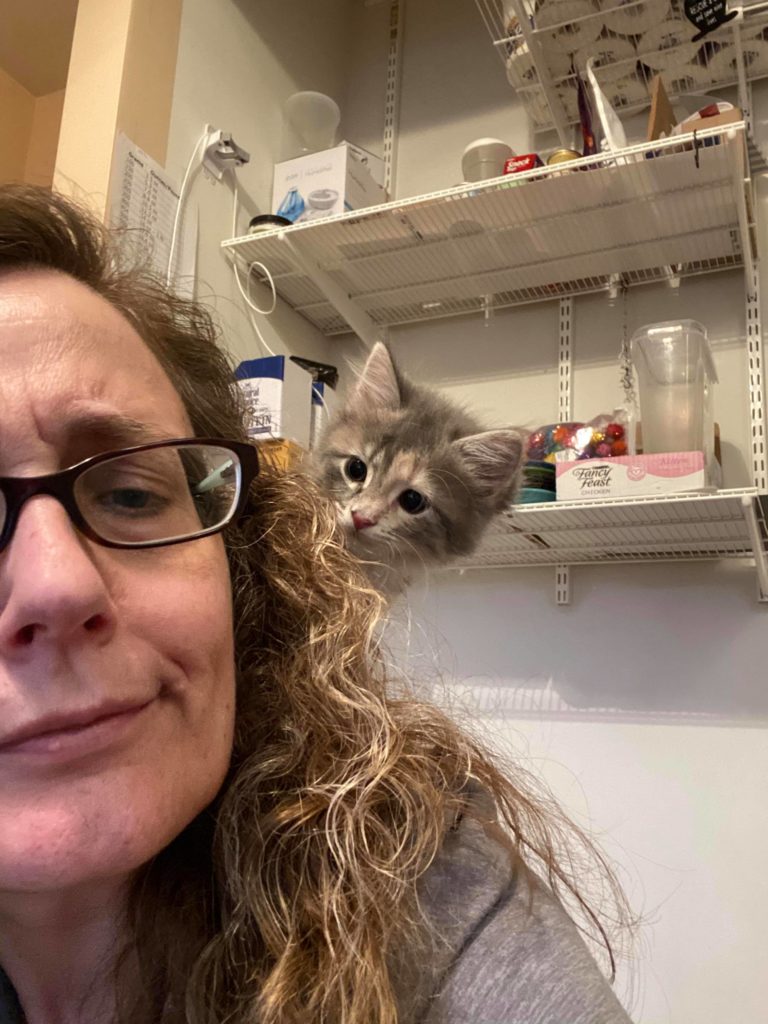
What was your most challenging kitten/litter?
One of the most challenging was the first litter we got that had ringworm. The babies were 10 days old and almost immediately we saw the ringworm. Your heart sinks because you know it’s going to be a LONG road. Ringworm is not fatal to kittens, but it is quite contagious…and we had to be really careful not to spread it to other fosters in our home.
The one you are most proud of?
Maile for sure. 100%. Malie came to us from a local couple. It’s a crazy story. A woman posted in a group…asking if there were any rescue groups in the Chicago suburbs who could help out her daughter with this pregnant cat they were feeding on their deck…So I got in touch with this woman, and her daughter brought over the very pregnant Maile, who was completely terrified. She was hanging off the window trying to get out she was so scared. And I thought “what have I gotten myself into.”
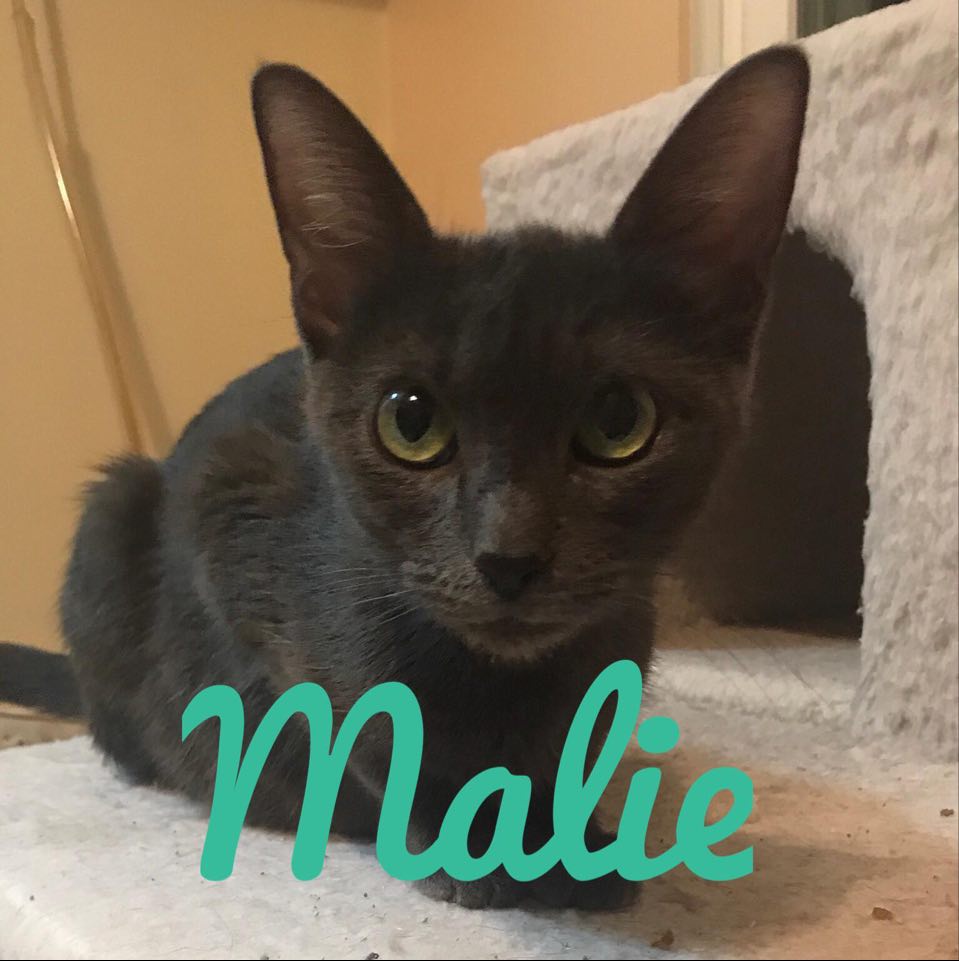
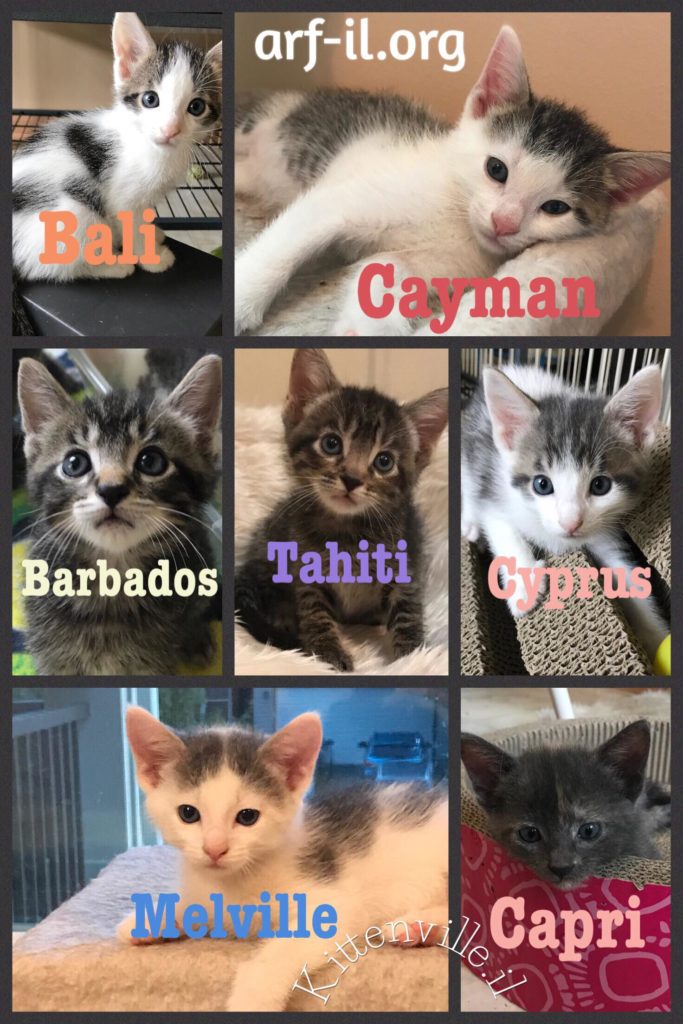
Six days later Malie delivered seven beautiful kittens (the Island babies) and she let me touch her for the first time. She and I got to be very close over the next 2 months and I cried when she got adopted. I was so very proud of her and so happy for her. Not all community cats want to live inside, and if she was unhappy indoors I was prepared to let her go back to where she had been living (once she was spayed). But she has blossomed in her new home and I’m so happy to have been a part of her story.
What was the best advice you got when you started fostering?
Call [your foster mentor]! I watched several fosters on livestream before I started fostering myself, and even after I started fostering. It’s a great community out there with so many people going through the same thing you are. There are so many resources available now that didn’t exist even five years ago. The best advice I can give to people is to keep asking questions. Don’t ever assume things are one thing or another with your fosters. Keep asking questions and keep fighting for them.
You do quite a bit of your own marketing through the Kittenville Facebook page. What impact do you think that has made on the cats and kittens you care for? What impact has it had on pet fostering in general?
I hope that people can watch our live videos and learn a little about cats and cat care, and maybe even be inspired to foster themselves–or help out at their local animal shelter or rescue. I started Kittenville because I didn’t want to flood my own page with my kitten-y shenanigans….My friend Ann-Marie invited people she knew to follow and in one day we got 50 followers – which stunned me!
I’m always grateful for those who follow our page and the fosters in our care, and I hope we’ve brought some joy and education along the way. It really has become a great community and a mix of former adopters, wannabe adopters, friends and cheerleaders.
What advice would you give to somebody who is interested in cat fostering?
Try it and see! You never know until you try and I tell people all the time – there are so many ways to foster! The way I do things isn’t the only way to do things. If something different works for you and you’re accomplishing your goals, then go for it! Contact your local shelter/rescue group and get involved. I guarantee they need your help.
What equipment/space does somebody need to start fostering?
It depends on what kind of cat you want to foster. If you want to foster bottle babies you can put them in a Rubbermaid tub until they are 3 weeks old. They take up very little space and sleep most of the time! If you want to foster adult cats you probably need a separate bedroom or at minimum a bathroom, so that the kitty can have a little room to roam and be comfortable. But in all honesty, anything is better than a cage at animal control.
But you have to be able to keep them quarantined for two weeks when you first get them. It’s so important to do this to ensure that if they are incubating something they don’t pass it onto other cats in the home.
What would you strongly recommend/not recommend to every cat parent?
Every cat should be spayed/neutered. There is zero reason in this day and age to leave your animal intact–the only exception being a medical condition that would cause harm to the animal if it went under anesthesia. If you want your children to experience the miracle of birth, come and foster and we’ll get you a pregnant cat. And just like that you’re part of the solution and not part of the problem.
We recommend that you take your cat to the vet annually. Cats are masters at hiding their pain, so you may not know that there’s something wrong with your cat until it’s too late. Build a relationship with a veterinarian so that they can help you provide the best care for your cats.
Never, ever declaw your cats. Never. It’s amputation plain and simple and it’s horrific. Don’t tell me about your cat who was declawed and had no issues. It’s a procedure created to protect furniture which isn’t in the best interest of the cat. Cats come with claws. It’s part of who they are. If you don’t like that then a cat probably isn’t for you.
Why should people adopt from a shelter/animal rescue?
If your choice is between adopting from a shelter/rescue or buying from a breeder, then please go check out your local rescue or shelter. In 2018, 860,000 animals were killed in shelters due to lack of space. Until that number is zero, I don’t understand the need to go and buy a cat from a breeder. The world does not need any more cats created on purpose when we have so many who are here by accident and by a lack of spaying/neutering.
If a person can’t foster, how else can they get involved in animal welfare causes?
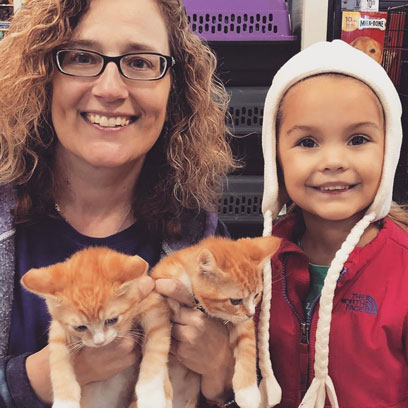
So many ways! Fostering is hugely rewarding but it’s not the only way to help out:
Volunteer at your local shelter or rescue – do they need someone to answer phones, or clean cages and socialize animals or stuff envelopes?
If you have the ability to do so, donate money or items the rescue group needs, maybe off of a wishlist on Amazon.
Educate – be a voice for the animals who have no homes. Take up a cause and help bring the information to the public.
Adopt – maybe fostering isn’t for you but you want to take a friend home for yourself.
If you are thinking of fostering, contact your local animal shelter or rescue service like A.R.F. We can work with you and pair you with the foster animals that fit best with your life. If you can’t foster, there are still lots of ways to help–volunteer in other areas, donate, educate, or adopt! Thank you Susan, and here’s to many more years of fostering and adoptions with A.R.F.!
How to Help
- Foster with A.R.F.
- Volunteer with A.R.F.
- Donate to the A.R.F. Kittenville Amazon Wish List
- Donate to A.R.F. directly
Learn More About Fostering Cats
- Kittenville Facebook page
- “The Kitten Lady” and neonatal kitten care
- Tips for fostering kittens
- Cat care tips from the ASPCA
- Things to consider before bringing a cat home
Learn More About Animal Welfare
Post written by: volunteer Katie Glaudell, freelance copywriter
